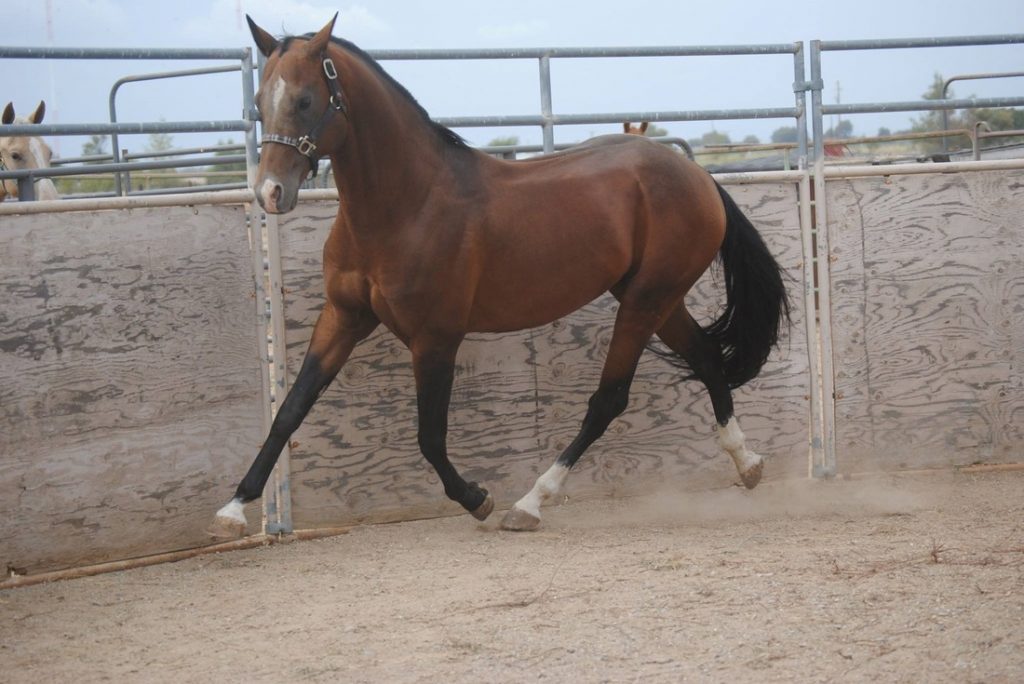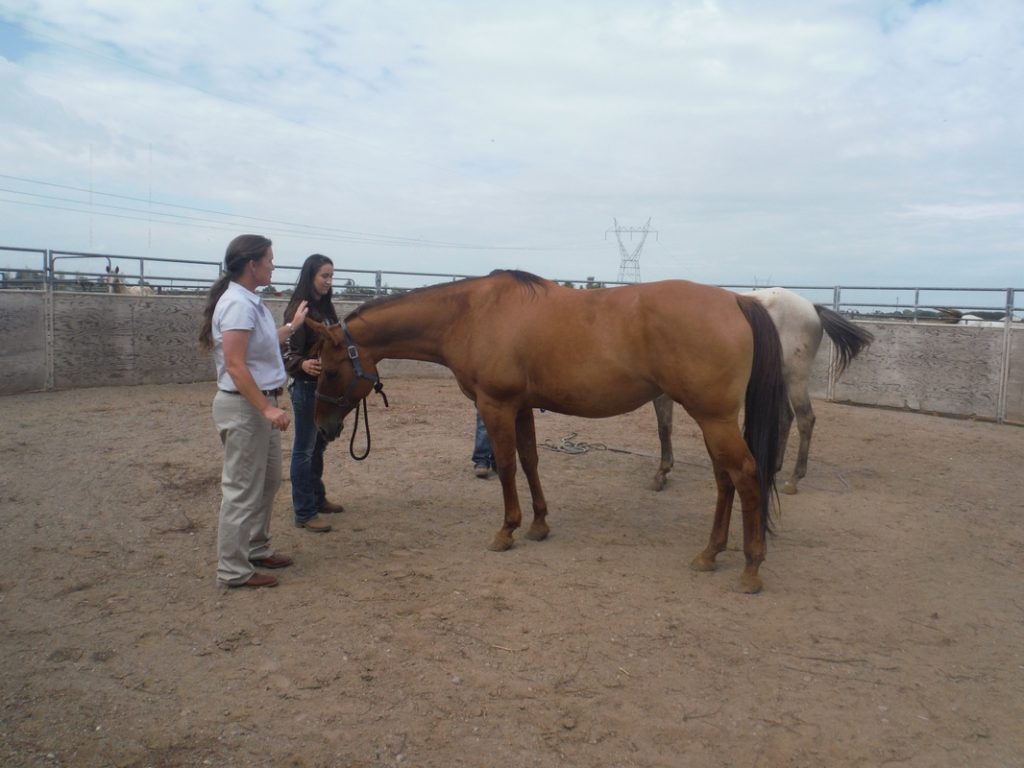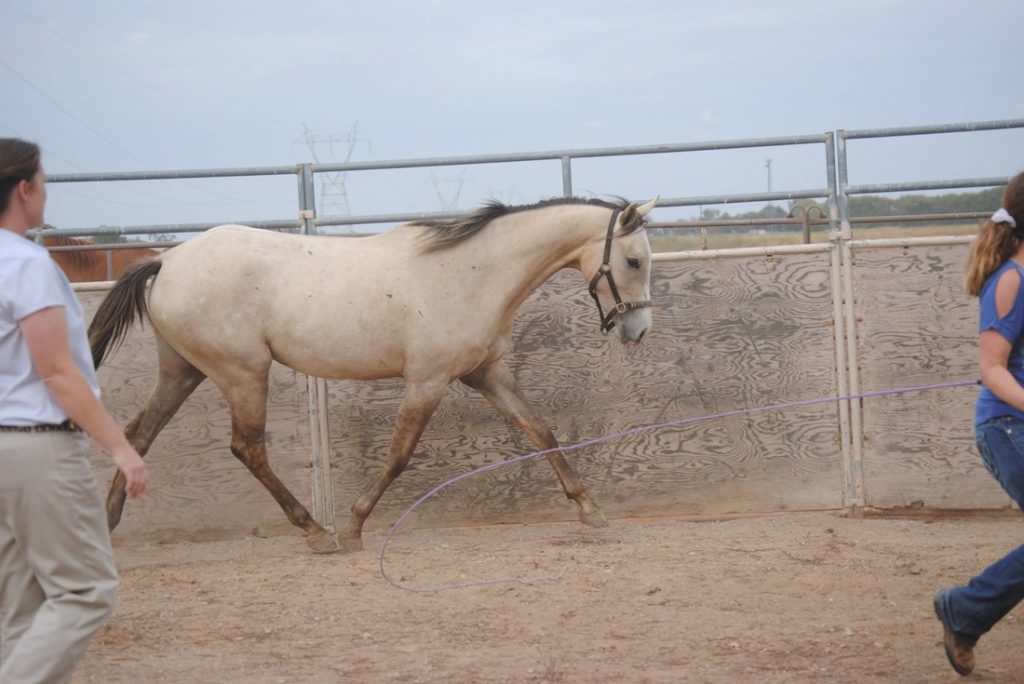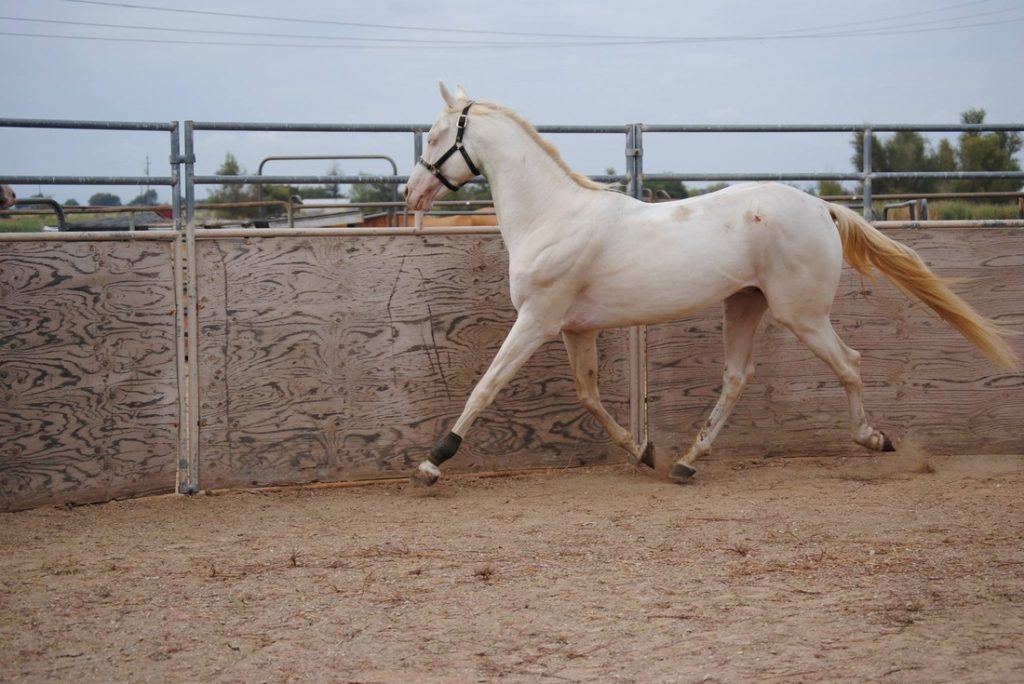
New Findings on the Gait of Akhal-Teke Horses
By Dr. Molly Nicodemus, Mississippi State University & Jeannette Beranger, The Livestock Conservancy
As an ongoing part of a collaborative study on the gaits of rare breed horses, Dr. Molly Nicodemus, of Mississippi State University’s Gaited Locomotive Research Program, and Jeannette Beranger, of The Livestock Conservancy, have been working together to collect and analyze video clips of the endangered breeds of horses on the Conservancy’s Conservation Priority List (CPL).
The most recent findings in this effort are on the Akhal-Teke breed, which is currently listed as ‘Threatened” on the CPL. Breeds previously studied have been the Marsh Tacky, Wilbur-Cruce and Banker horses. Studies of the gaits of the Irish Draught and the Choctaw are currently under way.



Akhal-Teke Gait Study continued
The Akhal-Teke study was conducted with the help of long time Akhal-Teke owner/breeder Phil Case and two of his trainers, Sabine Desper and Liz Morgan. Phil and his wife Margot were the first to bring this unique breed of horse to America in 1079. Sadly, Margot has since passed, but Phil still maintains a large herd of these horses on their farm in rural Virginia. For the study, Sabine and Liz rode a number of Phil’s horses in the training ring while Jeannette took video and photographs of each horse as they were put through their different gaits of walk, trot and canter. Individual and physical information on each horse was recorded and then sent along with the film footage to the University for study.
Dr. Nicodemus found that while the physical characteristics are what the breed is typically known for, the movement of the North American Akhal-Teke Horse is noteworthy having what is referred to as a smooth, elastic stride. Gait analysis, while previously not performed on this breed, offers researchers and opportunity to understand what allows the breed to perform its distinctive gait. A recent study done at Mississippi State University analyzed video supplied by The Livestock Conservancy of North American Akhal-Teke horses performing the trot. The study reported that unlike the 2 beat rhythm of the typical trot, this breed steps down individually with each hoof alternating between periods of a single limb supporting the body to two limbs, the diagonal limbs, supporting the body. While the gait has a diagonal footfall sequence (left hind-right fore-right hind-left fore) similar to the basic trot, by disassociating the diagonal pairs the gait loses a period of suspension, and thus, making the gait less concussive. Similar gait characteristics are seen in other breeds, but the velocity performed for these other breeds is slower than the Akhal-Teke horse. In most breeds with an increase in velocity, suspension will appear as the diagonal limbs move as pairs and thus, a faster velocity performed by the Akhal-Teke Horse may allow for the breed to perform a 2-beat, leaping trot. Nevertheless, the preference of the Akhal-Teke horse to perform this adapted trot will allow the rider to site more comfortably, which in turn, will relieve some of the concussion the horse may feel if the rider was bouncing due to a more jarring, leaping gaits. Although the suspension allows for a more efficient gaits, for the Akhal-Teke horse, due to their very distinctive longer back, which is typically undesirable for most breeds, this gait may allow for the horse to remain sounder across the back as they age. Additional research concerning conformation and gait in the Akhal-Teke horse is further needed to test this hypothesis.
Dr. Nicodemus is still looking for 6 more Tekes or Teke crosses to complete her study. She writes:
“With research we can always use more test subjects so if you have horse owners that can video their horse’s gaits, especially varying speeds of the trot, that would be helpful. Would help to have the video done in arena so I can use the railing as a reference point. With what video they send it is helpful to have horse info on age and height along with video of the horse standing or a picture for evaluation of conformation. Video may be too large to send via email so they can also just send it to my school address. Any format will work.
A minute at each gait and at each speed is plenty. Also make sure the whole body and especially the hooves can easily be seen in the video. Since my other video is under saddle, ridden, I would prefer the same for all video. So:
- Horses under saddle with rider
- Railings as a reference point
- 1 minute at each gait and speed
- Whole body and hooves easily seen
- Send age and height of horse along with video or photo of horse standing to evaluate conformation
- Any format of video
Send to:
Molly Nicodemus
1805 Hwy 393
Louisville, MS 39339
or email: MNicodemus@ads.msstate.edu
